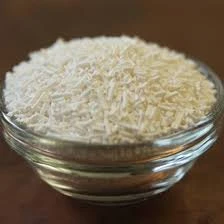
formic acid hcooh
Formic Acid (HCOOH) Properties, Applications, and Safety Considerations
Formic acid, with the chemical formula HCOOH, is the simplest carboxylic acid. It is a colorless, strong-smelling liquid that is highly soluble in water and has a wide array of uses across different industries. Its name is derived from the Latin formica, which means ant, as the acid was first isolated from ants in the 17th century by the chemist John Ray. This article will explore the properties, applications, and safety considerations associated with formic acid.
Chemical Properties and Structure
Formic acid consists of a single carbon atom, two oxygen atoms, and four hydrogen atoms. Its molecular structure is represented as HCOOH, containing a functional carboxyl group (-COOH) that imparts acidic properties. The acid has a pKa value of approximately 3.75, indicating its significant acidity compared to many organic compounds. Formic acid can be produced through both natural and synthetic processes. In nature, it can be found in certain ant species, as well as in nettles and some fruits, while industrially, it’s primarily produced by the hydration of carbon monoxide or through the oxidation of methanol.
Industrial Uses
Formic acid has numerous applications across various sectors
1. Textile Industry It is commonly used in the textile industry for dyeing and finishing fabrics. Its ability to fix dyes to textiles makes it an essential component in this field.
2. Leather Production The acid serves in the tanning process of leather, helping to stabilize collagen fibers and enhance the quality of the final product.
3. Agriculture In agriculture, formic acid is utilized as a preservative and acidity regulator in silage and animal feed. Its antifungal and antibacterial properties help in maintaining the quality of livestock feed.
formic acid hcooh

5. Cleaning Agent Due to its strong acid nature, formic acid is used in various cleaning applications, especially for removing rust and mineral deposits.
6. Fuel Cells Recent advancements have seen formic acid being explored as a potential hydrogen carrier for fuel cells, offering a cleaner alternative to fossil fuels.
Safety Considerations
While formic acid has a multitude of beneficial uses, it is essential to understand its safety considerations. As a strong organic acid, it is corrosive and poses risks if not handled properly. Exposure to concentrated formic acid can cause severe skin burns, respiratory irritation, and damage to the eyes. When working with this substance, it is crucial to wear appropriate personal protective equipment (PPE), such as gloves, goggles, and face masks.
In terms of environmental impact, formic acid is classified as a hazardous material, and its release into water bodies can lead to adverse effects on aquatic life. Therefore, proper disposal methods and caution are necessary to mitigate environmental risks.
Conclusion
Formic acid is a vital compound with various applications, primarily due to its unique chemical properties. It plays a significant role in industries ranging from textiles and agriculture to chemical synthesis and fuel technology. However, users must balance these benefits with proper safety measures to minimize health risks. As research continues, the potential of formic acid may expand even further, promising innovative solutions for industrial processes and environmental challenges. Understanding its properties and applications is essential for harnessing its full potential while ensuring safety and environmental stewardship.
-
Pure Sodium Dichloroisocyanurate Dihydrate | Powerful DisinfectantNewsAug.29,2025
-
Industrial Chemicals: Quality & Purity for Every IndustryNewsAug.28,2025
-
Nitrile Rubber Honoring Strict Production StandardsNewsAug.22,2025
-
Aspartame Ingredients Honoring Food Safety ValuesNewsAug.22,2025
-
Fertilizer for Balanced Plant NutritionNewsAug.22,2025
-
Cyanide Gold Processing with High Purity AdditivesNewsAug.22,2025
-
Formic Acid in Textile Dyeing ApplicationsNewsAug.22,2025
Hebei Tenger Chemical Technology Co., Ltd. focuses on the chemical industry and is committed to the export service of chemical raw materials.
-

view more DiethanolisopropanolamineIn the ever-growing field of chemical solutions, diethanolisopropanolamine (DEIPA) stands out as a versatile and important compound. Due to its unique chemical structure and properties, DEIPA is of interest to various industries including construction, personal care, and agriculture. -

view more TriisopropanolamineTriisopropanolamine (TIPA) alkanol amine substance, is a kind of alcohol amine compound with amino and alcohol hydroxyl, and because of its molecules contains both amino and hydroxyl. -

view more Tetramethyl Thiuram DisulfideTetramethyl thiuram disulfide, also known as TMTD, is a white to light-yellow powder with a distinct sulfur-like odor. It is soluble in organic solvents such as benzene, acetone, and ethyl acetate, making it highly versatile for use in different formulations. TMTD is known for its excellent vulcanization acceleration properties, which makes it a key ingredient in the production of rubber products. Additionally, it acts as an effective fungicide and bactericide, making it valuable in agricultural applications. Its high purity and stability ensure consistent performance, making it a preferred choice for manufacturers across various industries.





